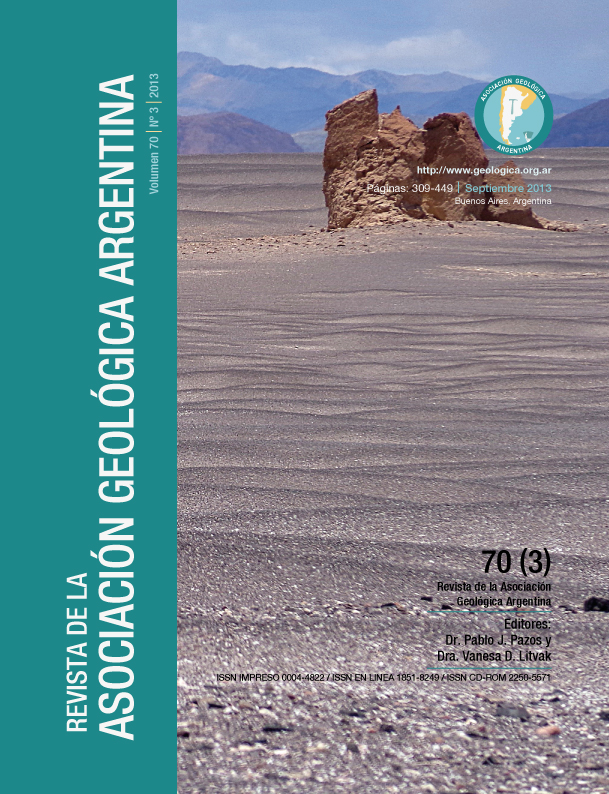Late-Neoproterozoic hydrothermal fluid activity in the Tandilia belt, Argentina
Main Article Content
Abstract
In the Barker - Villa Cacique area, Tandilia belt, alteration mineral assemblages were studied by petrography, XRD and EMPA at three different stratigraphic levels: (1) a phyllic alteration at the unconformity palaeoproterozoic basement-neoproterozoic sedimentary succession (TLPU); (2) an advanced argillic alteration in the Las Águilas Formation (middle level); and (3) a phyllicalteration on pyroclastic rocks of the Olavarría Formation (upper level). Special emphasize was placed on the chemical characterization of K-white micas and chlorites. Secondary K-white micas of altered migmatites, from the Las Aguilas and Olavarría Formations have a low paragonite content (Na* <0.13) with a distinctly higher phengite content (Si/Al(tot) ~1.6) in the latter. Secondary Fe-chlorites in arenites at the TLPU and from pyroclastic rocks of the Olavarría Formation have a high Fe/(Fe+Mg) ratio between ~0.80 and 0.88. K/Ar mineral ages (K-white micas and Na-bearing alunite) constrained the hydrothermal fluid flow between ca. 590 and 620 Ma, post-dating diagenesis. Illite crystallinity and chlorite geothermometry of altered and dated rocks suggest upward decreasing temperatures from ~350 - 300 ºC to ~250 ºC, markedly higher than the expected diagenetic temperatures and correlative with unlikely deep depths (>9.5 km) for the entire sedimentary pile. Hot fluids would rise from deep-seated realms, metamorphic and/or hidden igneous sources. A correlation with a Brasiliano thermo-tectonic event is hypothesized.
Article Details

This work is licensed under a Creative Commons Attribution-NonCommercial 4.0 International License.
Nota de copyright
Los autores conservan los derechos de autor y garantizan a la revista el derecho de ser la primera publicación del trabajo licenciado según una licencia de atribución Creative Commons que permite a otros compartir el trabajo con el reconocimiento de la autoría y de la publicación en la que se publicó por primera vez.
Declaración de privacidad
Los nombres y direcciones de correo electrónico introducidos en esta revista se usarán exclusivamente para los fines declarados por esta revista y no estarán disponibles para ningún otro propósito u otra persona.

